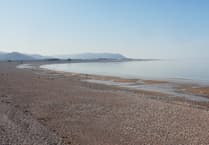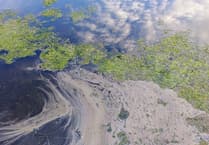A GOVERNMENT minister was this week urged to reject a change in plans which, campaigners claim, would lead to an estimated 182 million fish a year being sucked through the cooling systems at Hinkley Point C nuclear power station after it comes into service in 2026.
Station owners EDF Energy have applied to the Environment Agency for permission to drop plans for a series of underwater speakers designed to produce sound frequencies which could deter fish from entering two giant tunnels which will suck up 120,000 litres of water a second.
EDF claims that installing an ‘acoustic fish deterrent’ (AFD ) system would be too risky for its divers and other workers, and that other methods - including fitting grilles, slowing down the cooling water and returning fish sucked into the system - would be more effective.
EDF is seeking a variation on the original planning permission which stipulated that an ADF system should be installed. The EDF appeal was subject to a 12-day Planning Inspectorate public inquiry in June which has presented its findings to Environment Secretary George Eustace. He will make a decision by the autumn.
A spokesperson for the Stop Hinkley campaign group said this week: “George Eustace must reject EDF’s plans for a Severn Estuary fish-killing machine. This is his opportunity to show that the Government’s commitment to reversing nature’s decline actually means something.
“The Secretary of State should support the Government’s Environment Agency and reject EDF’s appeal.
“It is feared that without AFDs the Hinkley Point C cooling water system could kill up to 11 billion fish over its 60-year life - that is half a million a day.”
Disputing these figures, an EDF spokesman said that an independent study had shown that with the planned protection measures in place, the power station would have a negligible impact on the fish population.
He said: “The worst case predicted effect with the planned fish protection measures in place varies by species from an average of 0.2 per cent to less than 0.001 per cent a year. Studies concluded that this level is negligible compared with natural mortality and fishing.
“The predicted levels will have no effect on the sustainability of each species, nor on the predators that rely on the fish to survive.”





Comments
This article has no comments yet. Be the first to leave a comment.